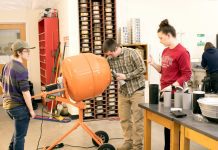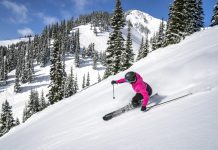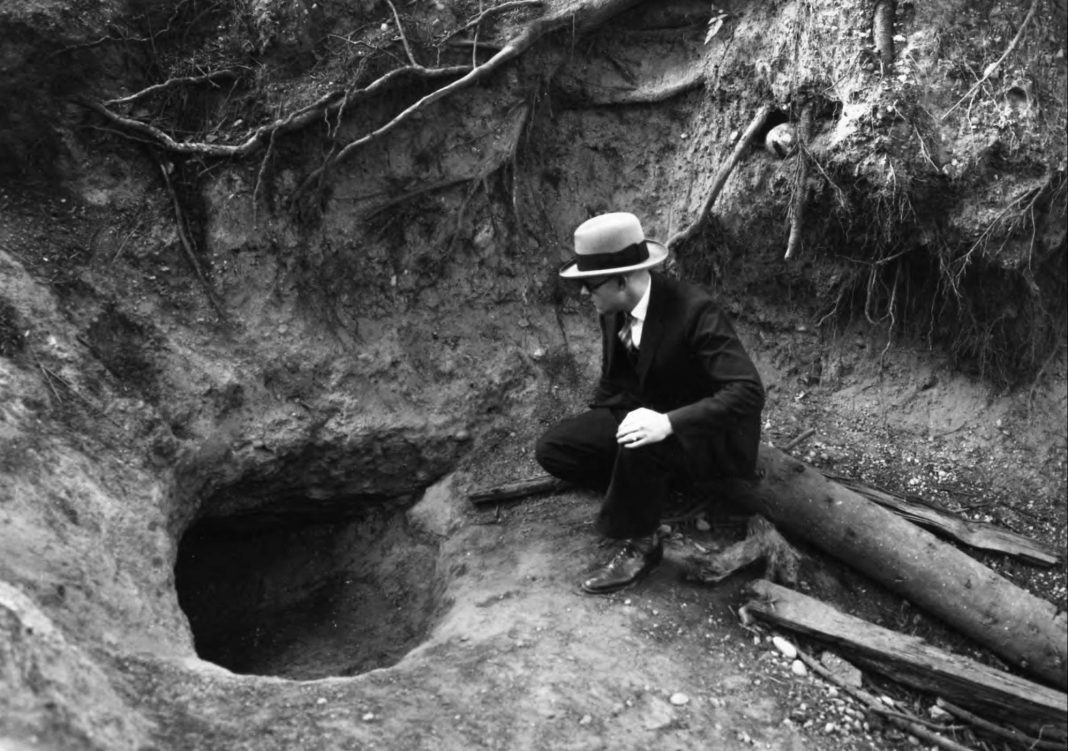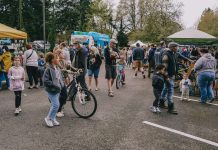Tacoma’s history as a rough-and-tumble pioneer town on the water makes it fertile soil for tales that would otherwise appear in pulp fiction magazines and dime-store novellas of a bygone era.
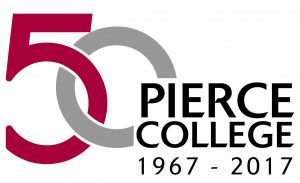 The City of Destiny had it all – brothels, saloons, corrupt politicians, railroad barons and rowdy loggers looking for fun during the heyday of the Old West. Some folks say that it also had “Shanghai tunnels” that ship captains would use to smuggle drunken saloon customers onto ships when prudence called for kidnapping crews to get the sails underway. Others say the Chinese railroad workers built the rumored tunnels to escape persecution that culminated in the Chinese expulsion of 1885. Yet others believe turn-of-the-last-century bootleggers and drug smugglers stored their wares in them.
The City of Destiny had it all – brothels, saloons, corrupt politicians, railroad barons and rowdy loggers looking for fun during the heyday of the Old West. Some folks say that it also had “Shanghai tunnels” that ship captains would use to smuggle drunken saloon customers onto ships when prudence called for kidnapping crews to get the sails underway. Others say the Chinese railroad workers built the rumored tunnels to escape persecution that culminated in the Chinese expulsion of 1885. Yet others believe turn-of-the-last-century bootleggers and drug smugglers stored their wares in them.
The truth behind the Chinese tunnels might just say more about ourselves than the history of Tacoma. The stories may survive simply because they are true, or they are at least based in truth, but have been embellished over the years to become urban legends alongside tales of a hook-handed escapee from an insane asylum and alligators in the sewer system. Theories abound. Evidence does not. But that doesn’t stop the stories.
Art Stop owner Phyllis Harrison, who just happens to also have a doctorate in folklore, did extensive research on the fabled Tacoma tunnels during her studies. She found little evidence of a subterranean network of smuggling tunnels, but what she did find is the stories of their existence only sprung up generations after they would have been used. She also found that “Chinese tunnel” stories can be found in most large cities – from San Francisco to Portland to Seattle to even Fargo, North Dakota – but have changed over time to match the racial zeitgeist of the time. The rise of immigration fears matches the rise of tunnel stories. Chinese tunnels became Japanese and then they became Vietnamese tunnels during and after the Vietnam War of the 1960s and 1970s.
“It’s a story that just won’t go away,” she said.
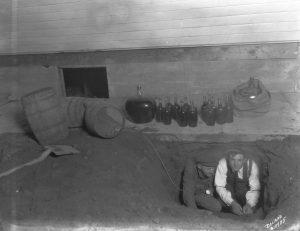
Tacoma Public Library’s repository of such matters, in fact, does contain mentions that the marshy lake west of State Route 16 near South 19th Street. The lake was given the name China Lake, reportedly because it was a site of a tunnel that had allegedly been dug by Chinese workers before they were forcibly expelled in 1885 – an act that gained national headlines as the Tacoma Method of removing Chinese railway workers after the tracks were laid. Several other tunnel stories involve nondescript sites in Fircrest and South Tacoma.
Rumors of tunnels running downtown focus on the Shanghai storyline, largely because of their proximity to the waterfront. The practice is based in fact, although the particulars are a matter of debate. It was called Shanghaiing, largely because shippers crafted the practice in that Chinese city as a way to shuttle cheap labor to America to build the transcontinental railroad.
The Tacoma version of the story generally involves the bars on Pacific Avenue because the nearby hillside slopes into Commencement Bay, making the shuttling of knocked-out sailors easy and undetectable. Many of these stories focus on the Bodega Saloon, built in 1889 at 709 Pacific Avenue. It is currently Meconi’s Pub and Eatery, but was the seediest bar and brothel in the city in the 1890s. The myth behind its tunnels has some factual history with it after two men talked about them in 1936 as part of the Federal Writers’ Project to gather local stories and put writers to work during the waning years of the Great Depression. The stories told by William Zimmerman and V.W. Jenkins remain in the Library of Congress and talk about “mysterious Chinese tunnels” beneath Tacoma.
 Far from urban legend, these tunnels are well known, but their purpose is less sinister than Shanghaiing or smuggling. The Consumer Central Heating Co. was based along Dock Street around the turn of the last century and provided many of the downtown buildings and hotels with steam heat. Lacking steel pipes that are commonly used today, the system required crawl-space-sized tunnels to send the steam from the plant to places throughout the city. The system operated for more than 50 years and only closed down in the late 1970s, when buildings shifted to having their own air conditioning systems. The tunnels were never removed and were only filled in when crews came across them. The boom of renovations underway in Tacoma’s historical buildings in recent years as well as the Chinese Reconciliation Park project likely rekindled stories about Tacoma’s tunnels.
Far from urban legend, these tunnels are well known, but their purpose is less sinister than Shanghaiing or smuggling. The Consumer Central Heating Co. was based along Dock Street around the turn of the last century and provided many of the downtown buildings and hotels with steam heat. Lacking steel pipes that are commonly used today, the system required crawl-space-sized tunnels to send the steam from the plant to places throughout the city. The system operated for more than 50 years and only closed down in the late 1970s, when buildings shifted to having their own air conditioning systems. The tunnels were never removed and were only filled in when crews came across them. The boom of renovations underway in Tacoma’s historical buildings in recent years as well as the Chinese Reconciliation Park project likely rekindled stories about Tacoma’s tunnels.
“There are just a ton of stories, people just love the idea of a secret, underground world,” said Tacoma historian and Artifacts Consulting principal Michael Sullivan, noting that such stories tie history into modern discussions with twists of pulp fiction mystery that can’t lose even against common sense. “People just love that. They love the idea of it.”
The idea that Chinese people would use tunnels to hide makes little sense because of the time and money required to build such a network. Tacoma was a no-laws town, so smugglers didn’t need tunnels. Opium was legal and spirits were cheap.
Modern reports of tunnels outside of downtown, often said to have been “found” in the 1970s and 1980s, could also simply be the remains of the old water system.
The area’s water mains were once made of wood and lined street right of ways. They were later abandoned for the concrete and metal pipes of today. Those wooden water drains were about 16-inches wide, but their openings were up to about three feet wide, Sullivan said.
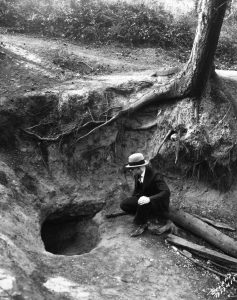
One photo that is often used in tunnel stories is one that appeared in the Oct. 8, 1925 edition of the News Tribune under the headline “Fircrest Mystery Tunnel Lures Adventure Seekers.” The story, by columnist Roy Beckman, told the story of a tunnel mouth along University Avenue that reportedly lead 2.5 miles to Salmon Beach, was wood framed had several rooms along the way.
“It was rumored that the tunnel had been used to smuggle opium or human contraband, but by the time of the newspaper article, a portion of the tunnel had been utilized by the community of Regents Park as a sewer and was uninhabitable due to sewer gas,” the caption stated.
University of Puget Sound geology professors Barry Goldstein and Jeff Tepper examined the photograph and said the hole could have been natural, but didn’t rule out human intervention for an actual tunnel.
“It appears to be located underneath a tree that has slumped or tilted over, so perhaps the hole is the result of a space left by rotation or movement of the roots during that process, and/or burrowing animals taking advantage of a small opening and enlarging it,” Goldstein said. “There is really no natural process that would create a human-sized tunnel that extends for more than just a few meters (at most) into the ground, let alone hundreds or even thousands of meters, through the kind of glacial sediments that underlie Tacoma.”
Tepper agrees that nature might have played at least part of the tunnel’s creation, but agrees that a tunnel of the size and scale outlined in the story would have to have been purposefully dug.
“The subsurface in Fircrest would consist of glacial sediments that could be vulnerable to natural erosion (if for example water was focused along a fracture or seam), but the size (suitable for a person), location (in a cliff face just below root level), and geometry (roughly equal height and width) suggest it was manmade,” he stated. “There is also some suggestion of excavated material below the opening, but it’s hard to tell.”
Marc Heinzman, Zoological curator at Northwest Trek Wildlife Park, has his own thoughts on the tunnels, specifically about the “tunnel” photo. He said black bears at the park dug a den about the same size last fall. But without knowing what it looked like inside, he couldn’t say for certain if it was likely a bear den. Bears do, sometimes, dig their dens under the root system of a tree (as shown in the photo) because that gives them a “roofline.” Bear dens open up into a cavity or den-shaped area, however. That could explain reports of witnesses seeing “rooms” in the tunnels, but bears don’t typically dig long tunnels as witnesses also described. There are no known photos inside the tunnel.
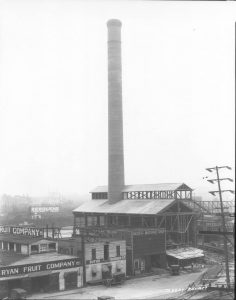
There was a long tunnel from Tacoma to what is now Fircrest, however, albeit an incomplete. It could have fed into the tunnel legends.
The tunnel was built for the Union Pacific Railroad Co’s subsidiary Oregon-Washington railroad, which sought a way to run a train yard and tracks in what is now the Nalley Valley. Work started in 1909 but a track-share agreement between Union Pacific and Nothern Pacific made the route obsolete before it was completed. Work simply stopped on May 19, 1910. The tunnel was a half mile long at the time. The tunnel was sealed, but was not forgotten. Water in the tunnel caused the timber braces to collapse. The roadway above started to slump by 1913, with sinkholes swallowing up sections of roadway.
The situation got dire when a cave in threatened a fire station and homes along South Jefferson Avenue in late 1914, when a 100-foot section of the road fell into the tunnel. The railroad then filled in the entire tunnel with gravel and soil.
Separating fact and fiction is tough when fiction makes a better story. What is known is that, yes, the city’s downtown has a web of tunnels under its streets. The purpose of those tunnels that have been researched can be explained as being steam tunnels. There is, or at least was, a tunnel from downtown to the suburbs, but it was a route for trains, not fleeing Chinese or vagabond smugglers. And it was never used.
But that does not stop people from talking about the Tacoma tunnels.








